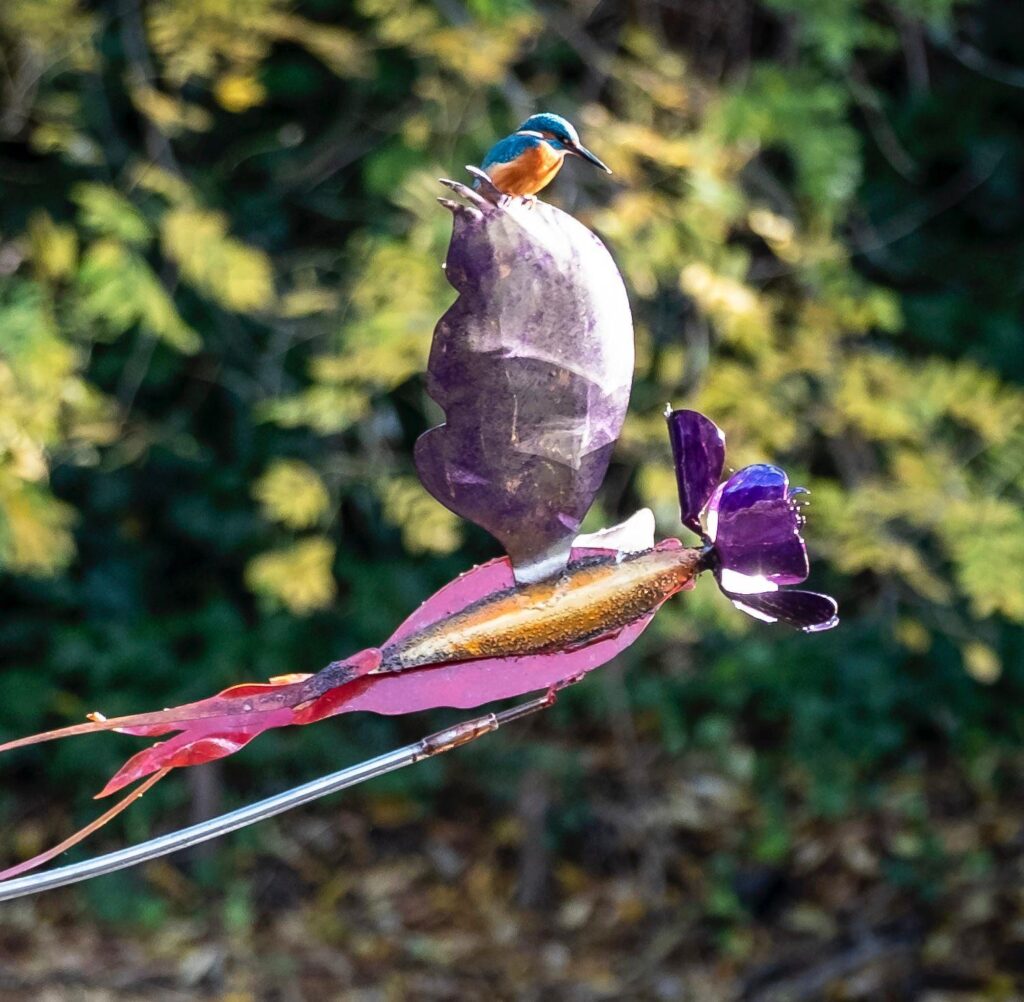
The new artwork in the middle of Manor House Gardens lake seems to be attracting a kingfisher, which are rarely seen there.
The bird was snapped by professional photographer Kevin Percival who works with Vladimir Lalić , the artist who created the sculpture “To Move is to Bloom” (2025) .
It’s believed the bird was tempted by the sculpture because it sits in clearer, water where it’s easier to spot fish than from branches on the edge of the lake. The vibrant colours of the artwork may also be an attraction.
Vladimir Lalić said “The installation To Move, is to Bloom was designed with a biophilic approach and carefully planned in close collaboration with Lewisham Council’s Greenspace and Nature Conservation teams, Glendale Services, and local ecology advisors.
“Before its installation, the environmental impact was assessed with attention to waterfowl activity, aquatic habitat health, and seasonal biodiversity within the Manor House Gardens lake.”
An Ecology Advisor at Creekside Discovery Centre (Deptford) added “The sculpture poses no harm to ducks or other wildlife in the park. Its structure is static and clearly visible above the waterline, allowing birds to safely navigate around it. The open water surface remains unobstructed for landing and feeding, and there are no wires, nets, or moving parts that could cause entanglement.
“The varying heights of the stainless-steel rods actually provide resting and observation points for birds such as mallards, coots, moorhens, and Canada geese. Kingfishers and other small birds have already been seen perching on the upper forms.
“The rods and forms mimic the vertical lines of reeds and branches, introducing structure without creating barriers or ‘pockets’ that might disrupt flight or movement. Positioned near the lake’s centre, the sculpture maintains open approach routes for waterfowl from every direction. The reflective colours subtly echo natural tones, adding visual interest and diversity without causing stress or disturbance to wildlife.”

